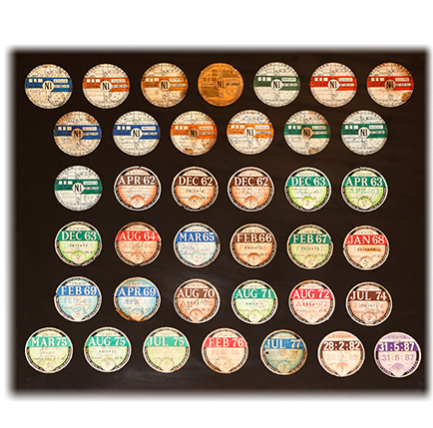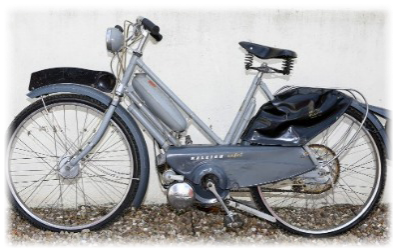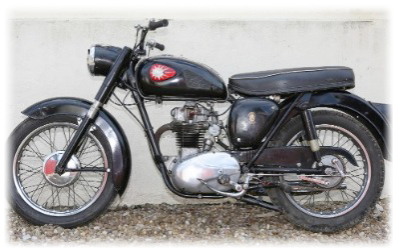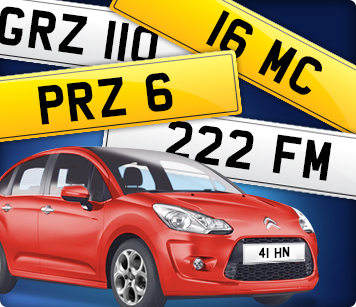History of Irish Plates
In the late 1800s law dictated that a mechanical vehicle have a crew of three, including one to walk in front with a red flag, presumable to warn people of their approach and to quieten horses. The speed limit was 4mph. The 1896 Locomotive and Highways Act was the first improvement in motoring laws to encourage the use of motor vehicles. The speed limit was raised to 14mph, or lower limit prescribed by the local government board. Lights also became compulsory. Every heavy locomotive had to be licensed by the County of County Borough Council. Regulations passed soon afterwards also provided for a speed limit of 12mph, keeping to the left when passing oncoming carriages, horse and cattle and to the right when overtaking and stopping the vehicle.
To celebrate the lifting of the restrictions on Emancipation Day, Saturday 14th November 1896, the newly formed British Motor Car Club staged an informal run from London to Brighton. 58 vehicles entered, 35 started and 25 arrived safely in Brighton. Before the start the Earl of Winchester tore up a symbolic red flag, an act commemorated in November each year at the London to Brighton run, arranged by the R.A.C.
At this time interest in the motorcar was increasing, but there was widespread dissatisfaction with the poor state of the roads. Indeed, the report on the Emancipation Run had declared: " the roads were filthy, and the cars progressed through a deep sea of mud, over surfaces of the most sodden and heavy going character. With increasing numbers of road users, hazards increased and it was difficult to identify the offenders of the few regulations that existed.
The First Car in Ireland
Mr John Brown of Longhurst, near Belfast imported the first motor vehicle into Ireland. Mr Brown was well known in the scientific community of the time for his research in electric theory and electrochemistry. Browns interest in transport led him to France where the automobile was making such rapid progress. During his stay he purchased a Serpollet Steam car, imported from France on 6th March 1896. The car was coke-fired with steel wheels and had a two-cylinder horizontal engine under the drivers seat. The poor quality of Irish roads made driving this rather a failure in comparison with France, Mr Browns experiences led him to become a founder member of the Irish Roads Improvement Association.
Around July 1903 it is estimated that there were less than fifty cars in the whole of Ireland, this figure trebled in the months leading to the introduction of the Motor Car Act. The Motor Car Act 1903 introduced measures to help identify vehicles and their owners, despite protests from many motorists who objected to being "numbered like convicts and labelled hackney carriages. All motor vehicles were to be registered, and to display registration marks in a prominent position. All drivers were to be licensed annually, County Councils were made Registration and Licensing Authorities, the vehicle registration fee was 20 shilling and the drivers licence fee was five shillings. The minimum age for driving motorcycles was 14 and 17 for other vehicles. The Bill also raised the speed limit to 20 mph with a limit of 10 mph fixed by the local Government Boards, and introduced heavy fines for speeding and reckless driving. Fines were also introduced for driving unlicensed vehicles.
Northern Irish made Cars
The only real success story in early Irish car manufacture is of the Chambers Brothers, the Belfast-based company. Jack Chambers designed and built the first Chambers car in 1904. Success in the Irish and Scottish reliability trails in the years established their reputation and new models were manufactured. Production peaked at around 500 cars per year, insufficient to see the company through the economic climate following World War 1, leading to its closure in 1927.
Advertisements of the time demonstrate how car manufacturers and dealerships facilitated the growth of car ownership with offers of hire purchase and deferred payment, making cars more affordable to wider sections of society. Chambers used the marketing technique of including doctors testimonials to demonstrate the reliability of their cars.
As from 1st January 1904 a driving licence was granted to any and every applicant without any form of testing, medical or practical. No questions were asked regarding a drivers medical fitness or disability, the licence was used for identification purposes only. Anyone who wanted to drive needed only to apply for a driving licence and learn to drive by trial and error. In 1905 a Royal Commission on Motors Cars concluded that it would be undesirable for a driving test to be taken before issuing licences. Such a decision can be accounted for by the status of the majority of drivers: influential people to whom the thought of a driving test would be completely unacceptable. All vehicles were required to have lights from 1907 when the Lights On Vehicles Act was introduced. The ever-increasing popularity of motor vehicles continued to take its toll on the road network, which clearly needed greater investment. The Finance Act 1908 passed responsibility for collecting the revenue from Excise Licensing from the Commissioners for the Inland Revenue to the County Councils. A 3d tax was also levied on a gallon of petrol. In 1909, the Development and Road Improvements Funds Act provided for grants to local authorities for approved highway works. The Finance Act 1909-10 based vehicle taxation on the horsepower of the vehicle (only changed in 1949), and allocated the revenue exclusively for road improvements.
Tens

Taxation
Motor Vehicle Taxation was introduced in 1909-1910 in the United Kingdom and was based on the horsepower (or engine size) of the vehicle, charges starting at £2.10s for vehicles under 6.5 H.P. The revenue from this tax was to be used for road improvements, hence its name "Road Fund Licence" In 1921 the tax was set at £1 a year per unit of horsepower and could be paid either annually or quarterly. Tax discs were introduced as proof of payment and were required to be displayed on the windscreen or nearside of the vehicle.Motor Tax 1910 for a car of 6-12 horsepower (1479cc) cost £3.3 shillings
Twenties
The Motor Traffic Act 1925 introduced the idea that a licence ought to contain the holders photograph. This was made compulsory in Northern Ireland in 1926, Great Britain only followed this seventy-two years later, in 1998.
Motor Vehicles (Traffic and Regulation) Act 1926 introduced new requirements for driving licences and a licensing system for Public Service Vehicles. There were fines for unlicensed public vehicles and overcrowding, the legal age requirement to drive a PSV was set at 21.
Safety Measures introduced were suspension for drunk driving and driving tests for any new disabled driver. It was made an offence not to stop after an accident, which occurs owing to the presence of a motorists car on the road. The minimum age for driving was 16 for motorcycles and 17 for other vehicles. The Minster of Transport also prepared a code of directions for the guidance of road users called The Highway Code.
A plethora of car dealerships with competing special offers and increasingly affordable cars advertised with ever-growing frequency in the newspapers of the time with a Car Buyers Guide featured in The Northern Whig in 1925. The range of cars advertised included famous car manufacturers of today: Chevrolet, Fiat, Daimler and Rolls Royce.
Motor Tax for car with 12hp (1479cc) cost £12.00 in 1921 It is interesting to note that one of our vehicles IA 6207, cost 12 shillings to tax in 1926 and to day is free.
Thirties & Forties
Motor Vehicles and Road Traffic Act 1930 made third party insurance compulsory on vehicles.
Motor Vehicles and Road Traffic Act (N.I.) 1934, brought Northern Ireland in line with Great Britain on the operation of insurance provisions, coming into effect on 1st January 1935. New Traffic offences included neglecting to report accidents to the police, parked cats obstructing highways and driving under the influence of drink or drugs when riding a bicycle or horse drawn carriage. A contentious development was the offence that any pedestrian, who, on a public highway, through negligence, endangers his own safety, or that of any other user of the roads, was guilty of the offence.
Women at the Wheel
Although fewer in number, women were included in the first generation of motorists in both Ireland and in Britain. These early "lady motorists' were wealthy and most came from socially prominent families.
Male Motorists often praised the ability, enthusiasm and beauty of women motorists but many viewed them with a mixture of astonishment, mockery and fear. However, during the 1920s and 30s a more glamorous image of the woman motorist developed that of a spirited, independent woman who owned her own car.
It was only the late 20th Century that the motoring world with its regular production of statistics has given us a true and fair picture of the woman motorist.
Women now make up 40% of the driving population. The pass rate for woman learners is 8-10% lower than for men but once behind the wheel, women drivers are increasingly recognised by car insurance companies as being better drivers. In 1931 there was 35,844 vehicles licensed, compared to 95,146 being registered in 1949.
Fifties
Road safety regulations aside, problems in road safety increased in direct proportion to the number of vehicles on the road. Reactions to the Road Traffic Act 1955 shown in correspondence between R.H.S Patterson, County Surveyor and Colonel Gorden provide an interesting insight into the attitudes and practices of road users at the time. Mr Patterson was particularly critical of drivers in Co Down: "While the vast majority of drivers are undoubtedly willing to behave properly on the roads, a very large numbers do not seem to have learned how to drive with safety and due regards to the convenience of other road users.
The problems could not be attributed solely to the lack of driving expertise: "Education, engineering and enforcement" have been described as the three Es of the road traffic problems According to the R.U.C. Annual Statistical Analysis of Road Accidents in N.I. 1954: 10% of all road accidents at this time were directly attributable to the poor road conditions, 75% were the fault of pedestrians and only 15% of driver-caused accidents were due to speeding. Driving competency tests were not introduced in Northern Ireland until the passing of the Road Traffic Act 1955, 21 years after Great Britain.
Motor Tax for a car with 12hp (1479cc) cost £15.00
Sixties
Road Traffic Act (N. I.) 1964 aimed to; "make further provision with respect to road traffic; and otherwise to make provision with respect to roads and the use thereof. Local road authorities were granted power to make byelaws and regulations as to one-way traffic etc. Measures were introduced for the rates, regulation and collection of car parking charges with parking meters and attendants, and related offences to the enforced. Traffic Wardens were employed to free police resources. They were to be supervised by the police and paid for from the Road Fund.
Contributory factors to accidents were analysed with measures included to alleviate the problems of accidents caused by dogs and driving under the influence of drink or drugs. In 1962, 37 accidents were recorded as being caused by dogs, so fines were introduced, if they were found wandering without a lead. Sterner legislation to combat drink-driving offences was enforced with the change in definition of the 1955 law include "impairment in ability to drive. Unlike the rest of Great Britain offenders did not have the right to trial by jury: in 1962 91% of those brought to court were convicted. For the persistent offender (3 times in 10 years) the penalty was disqualification, a fine and imprisonment for minimum of 6 months.
Despite the introduction of driving tests and increased fines for speeding the death toll was unprecedented since police records began in 1931 with 176 deaths, 6,000 injuries and 4,536 serious accidents in 1962. The R.U.C. Annual Statistical Analysis of Road Accidents in N.I. stated that:
"Never before were so many people injured in so many accidents in any year in Northern Ireland and on only two occasions were more killed and that was during two of the war years, 1941 and 1942, which of course were exceptional having regard to wartime conditions:
- The highest monthly figure ever recorded at this time was August 1962 with 453 accidents.
- Most dangerous time period was unchanging, the rush hour of 5 - 6pm
- The age-range of individuals most often responsible for accidents:
Pedestrians 2-11years
Cyclists 11-18years
Motorcyclists 16-23years
Drivers 18-29years
An interesting link between the increased number of vehicles registered and the growing need to address road safety is illustrated in the following statistics: 2.21% of vehicles were involved in accidents in 1962 with 0.88% of such vehicles being responsible for the accident. This may not seem a high figure but in context it means that 1 of every 114 drivers was responsible for an accident resulting in loss of life or injury. Motor Tax of a car with 12hp (1479cc) cost £17.50 in 1965.
Seventies
Northern Ireland vehicle licensing was centralised with the opening of the Vehicle Licensing Central Office (VLCO) in Coleraine in 1973 supported by eight Local Vehicle Licensing Offices. The Headquarters is responsible for maintaining the central vehicle record, issuing registration documents and licensing reminders, paying vehicle excise duty refunds and enforcing payment of vehicle excise duty. It also supplies vehicle registration details to the police.
The Local Office Network is responsible for the registration of new and imported vehicles and re-licensing of vehicles. The offices carry out local prosecution work and various other services.
Number Plates:
In 1973 the appearance of registration plates was changed for the first time since 1903. From 1st January, vehicles required reflective number plates; black on white at the front and black on yellow on the back. Reflective plates were introduced so the unlit vehicles could be seen more easily at night. The regulations also provided for the size, shape and character of registration marks. Motor Tax of car with 12hp (1479cc) cost £40 in 1975
Eighties
Motor Vehicles (Wearing of Seat Belts) Regulation Act 1982 came into force on 31st January 1983. A further change to driving came with lead-free petrol, introduced in 1987. Its widespread use was encouraged by the associated tax advantages from 1989.
QNI Marks:
QNI Marks were introduced in 1989. These are issued to vehicles with a chassis of indeterminate age and/or origin.
1987- 489,000 cars registered
1988 - 501,000 cars registered
1989 - 518,000 cars registered
Motor Tax of car with 12hp (1749cc) cost £100 in 1985
De Lorean
The De Lorean spent its first 3 years in Kuwait. It returned to England in 1986 and resided with the Yorkshire Car Collection until 1999. During this time it appeared in vintage car cavalcade in the TV programme Emmerdale Farm with Eric Pollard at the wheel.
The car has travelled just 17,650 kilometres and its first run out since returning to Northern Ireland was to the MOT centre, where it caused quite a stir among the staff and a few problems for the DVTA computer! The technology used to build the de Lorean was considered to be highly innovative and ahead of its time, and opinion borne out by the fact that the gearbox is the same design as gearboxes manufactured today.
"The vehicle was first registered on 10th February 1982. It was one of only 25 European specification (Eurospec) de Loreans built, and it is believed that of these, just 14 remain today
Nineties
Continued attempts to encourage more environmentally friendly road users came in June 1999 with the introduction of a reduced rate of Vehicle Excise Duty for cars with an engine size of 1100cc and below. This threshold has subsequently been increased to 1549cc.
Sale of Marks: In February 1996 DVLNI extended its traditional core business by offering for sale certain registration marks not previously issued through its Sale of Marks scheme. Registrations are sold by two distinct methods. The more valuable and prestigious are included in DVLNI auctions held about four or five times a year, more affordable registrations are sold by Tender.
- Cherished Transfers and Retentions: Since the early days of vehicle registration, the idea of having a personalised number for their vehicle has appealed to many individuals. The arrangements which allowed motorists to transfer and retain the use of attractive registration numbers has continued to develop and modify over the years. At the heart of these procedures lay the need to safeguard the vehicle register so that its primary function is not compromised by the changes in vehicles identities resulting from the transfer and retention of registration numbers.
- Penalty points were introduced in N Ireland in autumn 1997.
Motor Tax of a car 1479cc cost £125.00 in 1993
2000 to Present Day
In 2001 Graduated Vehicle Excise Duty was introduced with VED payable on new cars based on their C02 emissions and fuel type.
- Plate Lettering Regulations: The regulations introduced a standardised typeface, making it easier for number plates to be red. The change applies to plates of vehicles registered from 1st September 2001 and to all replacement plates issued from that date. The regulations will end the use of italic and other difficult to read lettering on number plates.
- SORN: The Statutory Off Road Notification (SORN) scheme was introduced in December 2002. When a vehicle licence expires, or when a refund is applied for, the keeper of the vehicle is required by law to notify DVLNI, if they do not intend to re-licence their vehicle and are taking it off the public road. Similarly, a new keeper of an unlicensed vehicle must either re-licence or make a SORN declaration.
1903-2003: Relevance of the Motor Car Act today Technological, social and economic developments since 1903 make the Motor Car Act relevant to Northern Irelands road users now more than ever. Increased volumes of traffic and related crimes mean that laws such as this are necessary to protect everyone who uses our roads. In March 2008 the DVLNI changed its name to DVA.
Vehicle Registrations in Northern Ireland: Fact and Figures
- At the end of 2002, there were 794,477 vehicles licensed in Northern Ireland, it was estimated that there were around 50 in the whole of Ireland in 1903.
- Vehicle Registration cost £1 in 1903 and costs £55 today.
- Driving Licence cost 5c and today costs £60.
- Renault Clio was the most popular model of car licensed in 2002.
- 41,174 car "Learner" driving tests were conducted in Northern Ireland during 2001-02, the overall pass rate for "L" driving tests was 48% compared to 43% Great Britain.
- During 2001-2, the male pass rate for the "L" driving test was 49% compared to 46% for females.
- Over the 10-year period from 1992 to 2001, licensed vehicle stock in Northern Ireland has increased by 33% compared with 19% in Scotland, 19% in England and 17% in Wales.
- The average age of a currently licensed PLG vehicle in Northern Ireland, at 31st December 2001, was 4.7years compared with 6.6 years in Great Britain.
- Over 61% of the PLG vehicles currently licensed at the end of 2001 had engine capacities of over 1500cc.
- Ford Fiesta was the most popular model of car licensed in 2001 and accounted for 4.5% of all PLGs. Renault Clio and Vauxhall Corsa were the next most popular models, accounting for 4.4% and 3.6% respectively.
- The number of vehicles registered for the first time in Northern Ireland in 2001 was 124,869
- During 2001, there were 207 PLG vehicles per 1,000 population aged over 16 years in Northern Ireland compared with 579 per 1,000 in Great Britain
- Northern Ireland is a very car dependant society with 81.5% of people travelling to work by car, van or minibus compared with 69.9% in the U.K.
Today road safety remains a subject of great concern, as the following figures demonstrate:
Motor Tax of a car with 1479cc cost £160 in 2003.
Background to Motor Car Act 1903
Locomotive and Highways Act 1896
- Speed Limit of 14mph
- Abolishment of red flag requirement
Motor Car Act 1903
- Registration of Vehicles
- Compulsory Driving Licenses
- Minimum age of motorcycle, 14 and 17 for all other vehicles
- Speed limit of 20 mph
Legislation after 1903
Finance Act 1908
- County Councils collected revenue from Excise Licensing
- A 3d Tax was levied on a gallon of petrol
The Finance Act 1909-10
- Vehicle taxation based on horsepower
Motor Vehicles (Traffic and Regulation) Act 1926
- Fines for unlicensed and overcrowding of public vehicles
- Legal age to drive a PSV was set at 21
- Declaration of physical fitness required for any disabled driver
- Highway code drawn up by Minister of Transport
Motor Vehicles and Road Traffic Act 1930
- Compulsory Third Party Insurance
Motor Vehicles and Road Traffic Act (N.I.) 1934
- Offences included
- Neglecting to report accidents to the police
- Parked cars obstructing highways
- Driving under the influence of drink or drugs when riding a bicycle or horse drawn carriage.
- An offence for pedestrians to endanger themselves, or others on public highways.
The Road Traffic Act 1955
- Driving tests made compulsory
The Road Traffic Act (N.I.) 1964
- Regulations introduced in car parking rates and collection
- Traffic Wardens employed
- Terner legislation to combat drink driving
Vehicle and Driving Licences Act 1969 (GB)
- Plans for central national systems for registration, led to the creation of a Centralised System for N.I.
Motor Vehicles (Wearing of Seat Belts) Regulation Act 1982
- Wearing of Seat Belts made compulsory.


A Guide to Irish Number Plates
Over the last few years, personalised number plates have become extremely popular. Once the indulgence of the mega wealthy, private plates are now an affordable and stylish way for motorists of all incomes to distinguish themselves from the crowd. Irish number plates are increasingly popular as they can provide an extremely cost effective and flexible personal number plate option. Prices start from as little as under £50, making them some of the cheapest number plates around.
As well as being well priced, Irish number plates have an added advantage - they are all considered dateless (no age identifier) and can be assigned to any car, whatever its age.
Irish number plates differ in format from DVLA plates in a couple of crucial ways. Because of their format, Irish plates allow you to have 2 or 3 letters followed by up to 4 digits. The letters can include I and Z, unlike DVLA plates. This greater flexibility offers a greater range of interesting word and spelling options.
There has been some very interesting releases of Irish registration marks, including GIL, BIL, DIG, BIG, JIL, FIL, MIL with each combination followed by the numbers 1 - 9999. Letter combinations that make a name, such as KAZ or GIL can prove to be a little expensive, but others, such as TIL and UEZ are very cheap. Other examples of Irish registration numbers are DIG 3690, ACZ 939, and XIL 11. Irish cherished numbers are known as 'dateless plates meaning that they don't have an age identifier. They can easily be transferred onto roadworthy vehicles in the UK
Irish number plates used to be significantly cheaper than UK DVLA plates although in recent years this has changed with the massive surge in popularity of all personalised car registrations. Recent high profile purchases of Irish Number plates include Irish businessman Sean McCrory, who not only spent over £100,000 for the registration BIG 1, but at the same Belfast auction bought BIG 2 for £15,000 and BIG 3 for £14,500 respectively. The previous record price for a Northern Ireland number plate until then had been £50,000 paid for WIL 1.
Perhaps the most famous purchase of an Irish Number plate was the £285,000 paid by Chelsea owner Roman Abramovich for the Irish plate VIP 1. Issued by the DVA in 1979 for the visit of Pope John Paul II and used on his "Popemobile" for the duration of his visit, the classic plate was sold after the tour, exchanging hands a couple of times before being picked up by Abramovich in 2006.
The DVA divides up Ireland into administering regions. Only when a series has been exhausted does the administering region move on to the next series. For example, one region had worked through the registration series SLZ 1 up to SLZ 9999 and has since moved on to the next series, which is TLZ 1 to TLZ 9999, and is currently working its way through YLZ.
It is interesting to note that our office at Speedy Registration Co Ltd is next door to the home place of the first owner of IL 1. The Eadie family from Snowhill Lisbellaw purchased a 1901 Daimler, which travelled at 14 miles per hour and had the Irish number plate IL 1.
History of Fermanagh Irish Number plates
Issued January 1904 (duration 54 years)
IL 1
Presently owned by the Grandson of the owner of the first registered vehicle in Fermanagh, Roland Eadie. It can still be seen driving around the road in Fermanagh and its not for sale
1 IL
issued January 1958 (duration 8 years)
AIL issued August 1966 (duration 8 years)
AIL 1
was sold by ourselves Speedy Registrations Co Ltd
BIL issued April 1974 (duration 4 years)
BIL 1
was issued by Enniskillen Tax Office to the Managers son, subsequently withdrawn and sold in auction to William Nethercott, Lisnaskea for £19,000
CIL issued August 1978 (duration 4 years)
CIL 1
Presently owned by Derrygonnelly Autos
DIL issued September 1982 (duration 3 years)
EIL issued December 1985 (unfinished stopped due to computerisation 1 Year)
EIL 1
sold in Auction November 1998 for £4800
FIL issued October 1986 (duration 3 years)
FIL 1sold in Auction May 1996 for £7000
GIL issued July 1989 (Duration 2 years)
GIL 1sold in Auction February, 1997 for £11800
HIL issued January 1991(duration 1 year)
HIL 1sold in Auction February, 1996 for £4800
IIL issued February 1992 (duration 1 year 9 months)
IIL 1sold in Auction May, 1997 for £3000
JIL issued November 1993 (duration 1 year)
JIL 1sold in Auction February 1996 for £6500
LIL issued November 1994 (duration 1 year)
LIL 1sold in Auction May 1996 for £2900
MIL issued November 1995 (duration 11 months)
MIL 1sold in Auction June 2000 for £11400
NIL issued October 1996 (duration 11 months)
NIL 1sold in Auction September 1998 for £4700
OIL issued September 1997 (duration 5 months)
OIL 1sold in Auction May 1998 for £22,000
(highest price paid for Irish Number plate in Auction to date)
PIL issued February 1998 (duration 9 months)
PIL 1sold in Auction November 1999 for £5900
RIL issued November 1998 (duration 10 months)
RIL 1sold in Auction June 2000 for £5200
SIL issued August 1999 (duration 9 months)
SIL 1sold in Auction September 2000 for £5200
TIL issued May 2000 (duration 8 months)
TIL 1sold in Auction September 2003 for £6100
UIL issued January 2001 (duration 11 months)
UIL 1sold in Auction July 2002 for £4000
VIL issued February 2002 (duration 10 months)
VIL 1sold in Auction September 2002 for £8800
XIL issued March 2003 (duration 9 months)
XIL 1sold in Auction November 2003 for £5000
YIL issued December 2003 (duration 12 months)
YIL 1sold in Auction April 2004 for £6100
IG issued from 2017 on Historic Vehicles
IG 1
sold in Auction July 2019 for £222,000
AIG issued December 2004 (duration 12 months)
AIG 1sold in Auction September 2005 for £14500
BIG issued December 2005 (duration 3 months)
BIG 1sold in Auction April 2006 for £80000
DIG issued March 2006 (duration 4 months)
DIG 1sold in Auction June 2006 for £50000
EIG issued July 2006 (duration 11 months)
EIG 1sold in Auction June 2007 for £9200
FIG issued June 2007 (duration 9 months)
FIG 1sold in Auction November 2007 for £7000
GIG issued March 2008 (duration 9 months)
GIG 1sold in Auction November 2008 for £11,000
HIG issued November 2008 (12 months)
HIG 1sold in Auction March 2009 for £8,200
IIG issued November 2009 (12 months)
IIG 1sold in Auction March 2010 for £6,300
JIG issued November 2010 (10 months)
JIG 1sold in Auction March 2011
KIG issued September 2011 (12 months)
KIG 1sold in Auction March 2012 for £2800
LIG issued October 2012 (12 months)
LIG 1sold in Auction March 2013 for £3200
MIG issued November 2013 (11 months)
MIG 1sold in Auction June 2014 for £17,900
OIG issued October 2014 (14 months)
OIG 1sold in Auction February 2015 for £4,200
RIG issued January 2016 (9 months)
sold in Auction July 2019 for £21,800
SIG issued in October 2016 (12 months)
TIG issued November 2017 (11 months)
TIG 1
sold in Auction July 2018 for £27,000
UIG issued October 2018 (current)
UIG 1
- During 2001-2, there were 13,462 vehicles involved in road traffic injury accidents. Cars accounted for 82% of vehicles involved in road accidents.
- Compared with England, Scotland and Wales, Northern Ireland has consistently shown the highest road accident death rate. In 2001, the rate in Northern Ireland was 8.7 deaths per 100,000 population. Scotland had the second highest rate of 6.8 per 100,000 population followed by Wales with a rate of 6.3 and England with a rate of 5.8. Northern Ireland also had the highest rate of road accident deaths per 10,000 vehicles (1.9), followed by Scotland (1.5), Wales (1.3) and England (1.1).
Why Choose Speedy?

UK's Leading Supplier of Dateless Number Plates »


